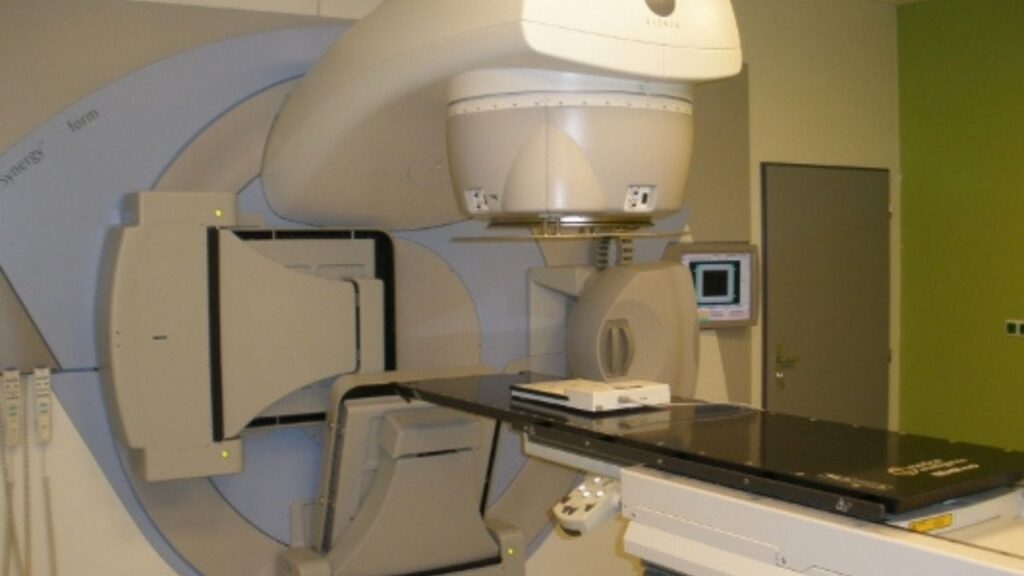Integrative medicine consists of multiple therapeutic practices that combine conventional and holistic treatments to offer a full range of care for your dog in the fight with cancer.
Key Takeaways
- Common integrative medicine treatments include acupuncture, herbal medicine, homeopathy, laser therapy, nutrition, rehabilitation, and spinal manipulation, but do not exclude surgery, chemotherapy, or radiation.
- Integrative medicine is a broad discipline that seamlessly blends Western medicine with holistic, traditional, and alternative practices.
- The terms “holistic,” “alternative,” or “complementary” are often used to describe integrative medicine, but those terms downplay the blended and over-arching approach to medicine this form takes.
- The practice recognizes the importance of both “hard” and “soft” information when devising a treatment plan.
- Integrative medicine is recognized by the American Veterinarian Medical Association and is more common than many people think, with 76% of pet owners using alternative or complementary therapies for their pets.
What is Integrative Medicine?
Integrative medicine is a broad discipline that is comprised of several different aspects of “whole-dog” care.1 The approach blends western medicine with holistic, traditional, and alternative practices with the goal of treating your dog’s medical needs wholly and comprehensively.
For example, evaluating your dog may involve conventional tools such as blood tests, ultrasounds, and x-rays, as well as consideration of lifestyle, environment, body condition, and pain score.1
An initial consultation with a veterinarian practicing integrative medicine can last up to 60 minutes because it is comprehensive. The session may include understanding how your pet breathes, interacts with the environment, moves, and responds to mental stimuli, along with examination of the overall condition of his musculature, coat quality, physical symmetry, and condition of the eyes, ears, nose, and mouth. The “soft” information gained is used just as much as “hard” information when devising a treatment plan.2
Is Integrative Medicine the Same as Alternative or Holistic Medicine?
The terms “holistic” or “alternative” are often used in conjunction with integrative medicine, but these terms are misleading and take away from the over-arching approach to care that the practice reflects.3
Rather, integrative medicine combines conventional mainstream treatments with a subset of therapies that are not an integral part of the dominant veterinary healthcare system.4
Integrative medicine is recognized by the American Veterinarian Medical Association. The trade organization demands that the practice be held to the same standards as conventional approaches.5 Still, owners may hear from more conventionally-minded vets that integrative medicine is ineffective, superfluous, or unsubstantiated.6
Regardless, it may be more common in practice than you think. Among 254 owners whose dog or cat had cancer, 76% reported at least some use of alternative or complementary therapies.7
Common Examples of Integrative Medicine Treatments
An integrative vet will naturally use western medicine techniques such as medications, surgery, chemotherapy, and vaccinations as appropriate.
There are a number of treatments that an integrative veterinarian may also use. This is by no means an exhaustive list but includes the most common ones.3
Keep in mind that your veterinarian should always consult with you prior to using these treatments, just as they would with any conventional treatment.9
- Acupuncture inserts very thin needles into specific areas on your dog’s body to stimulate the central nervous system. Each session takes about 40 to 45 minutes. You may also see electroacupuncture offered, which involves the application of a low-level (mA) current through the acupuncture needles to assist with pain management.
- Herbal Medicine falls under the field of ethnopharmacology, which is a broader discipline focused on the traditional medicinal use of plants and other substances.
- Homeopathy is a 200-plus-year-old medical system that operates under the principle of “like treats like”. With this idea, a substance that causes symptoms in a healthy person (or dog!), can trigger healing in a person or dog with similar symptoms.
- Hyperbaric Oxygen is a treatment where your dog is placed in a large chamber with 100% oxygen at two to three times the pressure of atmospheric oxygen. This induces a series of physiological effects such as the production of ATP (energy) in the cell. Most sessions last one to two hours.
- Laser Therapy involves the use of deep penetrating light to induce a biochemical reaction in your dog’s cells. This process releases endorphins and other molecules that are useful for treating pain and inflammation. Expedited wound healing has also been reported. Note: laser is NOT recommended over a tumor, as it may accelerate growth.
- Massage therapy manipulates the soft tissue of your dog’s body, and can be used to reduce muscle tension, pain, and anxiety.
- Nutraceuticals and Supplements were found to be the most common alternative therapy used among 254 owners whose dogs or cats had cancer7. If you are interested in using supplements to help your dog with cancer, getting an integrative veterinarian on your team to help make informed decisions is an excellent idea.
- Nutrition is one of the more common alternative therapies used within integrative medicine. Your dog’s health history, food intake, supplement intake, digestive health, and allergies or intolerances are taken into consideration to build a dietary plan that meets your dog’s health goals.
- Regenerative Medicine is an emerging science with many applications.
- Platelet Replacement Therapy is a technique used to facilitate the repair of damaged tissues by injecting concentrated amounts of your dog’s own platelets taken from his blood. Stem Cell Therapy harvests stem cells from your dog’s body (such as from fat) and then administers them into the problem area of the body being treated.
- Rehabilitation encompasses many tools, including physical therapy, hydrotherapy, electrostimulation, and therapeutic ultrasound with the goal of increasing mobility and decreasing pain.
- Spinal Manipulation is a manual therapy like chiropractic care in humans. This practice focuses on the biomechanics of the spine and how it can be leveraged to improve movement and the nervous system through a series of carefully planned adjustments.
The Benefits of an Integrative Approach
The plus to an integrative approach is that it utilizes the best tools and strategies from all schools of medicine. Your dog can absolutely benefit from both “traditional” and “alternative” therapies, even at the same time.
The Strengths of Western Medicine
Western veterinary medicine necessitates that certification, training, licenses, and degrees are acquired prior to practicing conventional techniques. This allows for a “checkpoint” of sorts, helping to ensure that western medicine approaches are legitimately practiced. Because of these kinds of requirements, veterinarians will know, be familiar with, and most likely understand in-depth, these methods.
The methods themselves will also have to have undergone rigorous testing and objective evaluation to ensure that they are safe and effective.4 Ethical guidelines are often established and monitored under some sort of vetting process that can remove certifications in the case of violation. The extent of research that goes into these methods, along with the required ethics oversight, also minimizes the controversy surrounding the use of western medicine in veterinary practice.4
The Strengths of Eastern Medicine
Just as there are strengths for western, or conventional, medicine methods, there are also strengths for eastern medicine methods. First, eastern medicine practices are typically noninvasive or minimally invasive.1 This means less risk and discomfort to your dog,6 with some methods being considered safer than their western medicine counterparts.3,4
Eastern medicine approaches can also assist in diagnosing a condition. For example, advanced imaging may provide insight, but massage and palpation can provide an additional “image” of the tumor.6 Lastly, while western medicine has the trust of most dog owners, that trust is being met with more and more skepticism. Eastern medicine is great at providing alternatives that owners, or their veterinarians, may not have previously considered.
How to Find an Integrative Vet
Not all practicing veterinarians exclusively practice using only western methods. There are a number of avenues to find veterinarians who use both modalities. And many veterinarians are more open to integrative medical practices than ever before.
If your veterinarian does not practice integrative medicine, they may partner up with one who does. Many veterinarians refer to others who have a particular skill set, certification, or interest.
There are also several websites designed to help you find an integrative medicine veterinarian. For example, the “Vet Finder” tool through the American Holistic Veterinary Medical Association organizes veterinarians by practice area, state, and treatment service offered.
An internet search using keywords may further help you find an integrative veterinarian. These can be helpful because they can provide you with additional resources on a particular veterinarian and their practice, and may include reviews from past and current patients that can help you evaluate suitability.
Integrative Oncologists
An integrative veterinary oncologist is board-certified in oncology, but also recognizes the value of holistic medicine and realizes that both complement and support your dog’s fight against cancer.2 There are currently only three integrative veterinary oncologists practicing in the United States, but this number is expected to increase.
Dr. Kendra Pope is an integrative oncologist who uses many approaches to treat cancer. She shares her thoughts and insights in this episode of DOG CANCER ANSWERS.
Are Regular Oncologists Open to Integrative Medicine?
While a “regular” veterinary oncologist may not actively practice integrative medicine, they have likely had at least some exposure to it while working in the clinical animal care field. In a survey of actively practicing veterinarians, more than two-thirds reported that they encountered clinical situations involving alternative therapies at least once a month, and over one quarter encountered them on a weekly or daily basis.8
Like in human medicine, the growth and increased use of integrative medicine in clinical veterinary settings are largely dog-owner-driven.3 A greater number of veterinary oncologists that practice integrative medicine will likely become available as demand increases. This is already coming to fruition as more and more integrative veterinary medicine curriculums are being developed.9
Younger Veterinarians Are Being Taught More Integrative Medicine
In a study that asked 34 veterinary colleges about an integrative medicine course, 16 (47%) of them offered such a course already and four colleges were planning to offer one within the next five years.8
It is likely that therapies once or currently considered “outside mainstream veterinary treatment” will likely become standard treatments in the future, including in the world of canine oncology.3
Is Integrative Medicine Just for People Who Can’t Afford Conventional Medicine?
The financial limitations of the owner as well as individual variation and uncontrollable factors in the dog’s environment may complicate veterinary cases and require expanded thinking outside of conventional methods.4
While there may be fewer options for veterinarian oncologists who practice integrative medicine, that doesn’t mean that you need to settle. You should always feel comfortable with, and trust, your veterinarian. Remote consultations may be an option even if you do not have access to an integrative veterinarian nearby.
Cancers That Can Benefit from Integrative Medicine
Integrative medicine may have a role in any cancer case, particularly those that are complex, cannot be operated on, or have not responded to conventional methods.1,4
Dog lovers who cannot afford costly conventional treatments may also benefit from the lower-cost therapies integrative veterinarians offer.
Integrative Oncologist Dr. Trina Hazzah is an expert on CBD and its uses. She shares her paper on CBD in this special episode of DOG CANCER ANSWERS
- Conway D. What is Integrative Veterinary Medicine? ETHOS Veternary Health. 2019. Available at: https://www.ethosvet.com/blog-post/integrative-veterinary-medicine/. Accessed November 17, 2022.
- Veterinary Specialty Center (VSC). Integrative Medicine – What to Expect. Rehabilitation and Integrative Care. 2022. Available at: https://www.vetspecialty.com/specialties/rehabilitation-and-integrative-care/integrative-medicine-what-to-expect/. Accessed on November 17, 2022.
- Shmalberg, J. Integrative Medicine: The Evidence, Economics, & Logistics of an Emerging Field. Today’s Veterinary Practice. 2016. Available at: https://todaysveterinarypractice.com/integrative-alternative-medicine/practice-building-integrative-medicine-the-evidence-economics-logistics-of-an-emerging-field/. Accessed on November 17, 2022.
- Ross C, Haussler KK, Kenney JD, et al. Frontier medicine – the future and integrative medicine. Adv Fut Eq Med. 2001;17:351-377.
- American Veterinary Medical Association (AVMA). Complementary, alternative, and integrative veterinary medicine. AVMA Policies. 2022. Available at: https://www.avma.org/resources-tools/avma-policies/complementary-alternative-and-integrative-veterinary-medicine. Accessed November 17, 2022.
- Robinson NG. Veterinary Opinions about Integrative Medicine Need to Change. Veterinary Team Brief. 2015. Available at: https://www.cliniciansbrief.com/article/veterinary-opinions-about-integrative-medicine-need-change. Accessed on November 17, 2022.
- Lana SE, Kogan LR, Crump KA, Graham JT, Robinson NG. The use of complementary and alternative therapies in dogs and cats with cancer. J Am Anim Hosp Assoc. 2006;42:361-265.
- Memon MA, Sprunger LK. Survey of colleges and schools of veterinary medicine regarding education in complementary and alternative veterinary medicine. J Am Vet Med Assoc. 2011;239:619-623.
- Memon MA, Shmalberg J, Adair III HS, et al. Intergrative veterinary medical education and consensus guidelines for an integrative medicine curriculum within veterinary colleges. Open Vet J. 2016;6:44-56.
Topics
Did You Find This Helpful? Share It with Your Pack!
Use the buttons to share what you learned on social media, download a PDF, print this out, or email it to your veterinarian.









